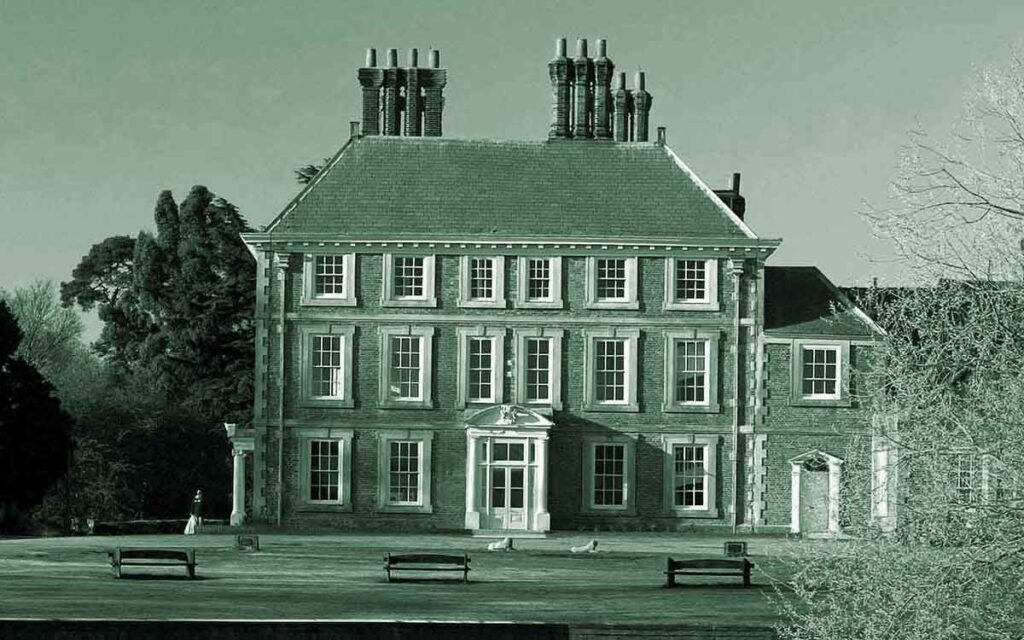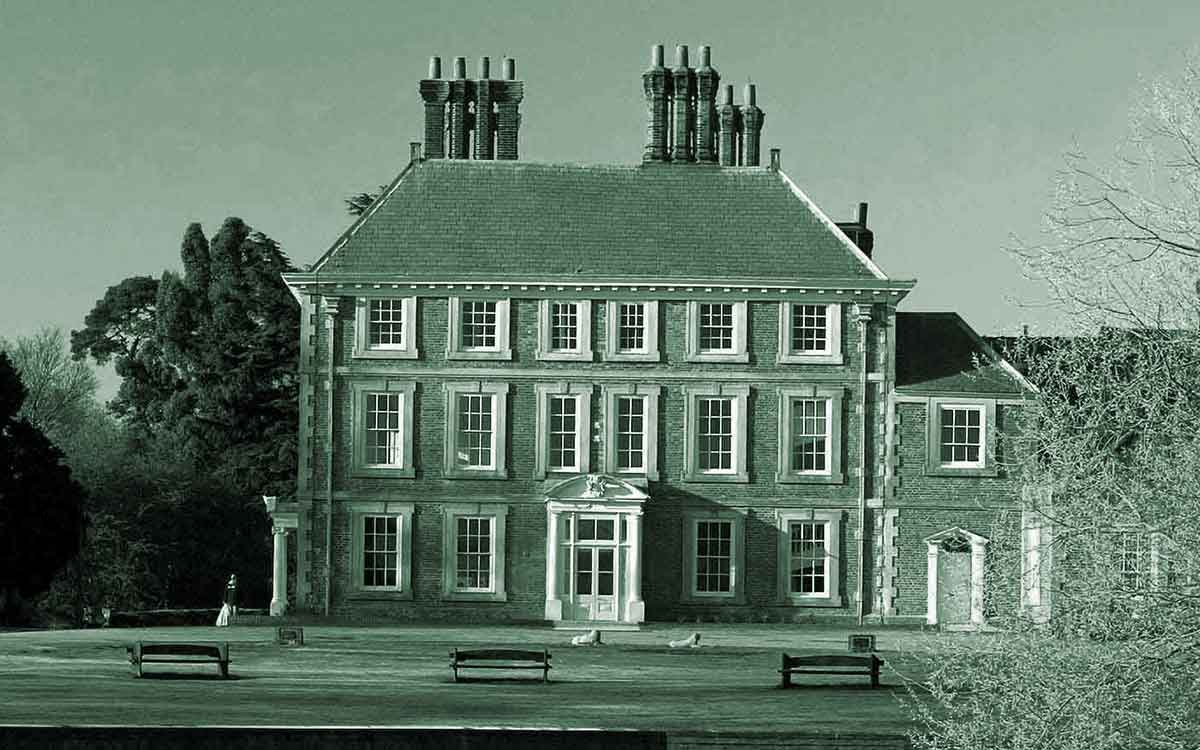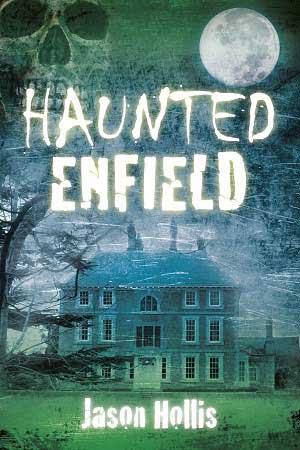JAY HOLLIS describes the haunting of Forty Hall in Enfield, North London – a place he grew up near and which still sends shivers up his spine!

I was born in the house where I grew up in Enfield, North London, and that was a stone’s throw away from the park that holds some of my earliest and fondest memories.
There were no slides, swings or roundabouts to play on but it didn’t need those, not when it had fields for running around in, woods for exploring, a walled garden for games of hide and seek, a cafeteria that stocked my favourite lollies and a witch’s house!
Okay, so the witch’s house was actually a large ornate shed where the gardeners kept their equipment but it had a tiled roof, small leaded windows and was half hidden behind bushes in the woods. Exactly the sort of place where a witch should live. It was terrifying. It was brilliant. It was the 1970s.
But I shouldn’t be writing this in the past tense for it’s all still there, except for the witch’s house. That fell into disrepair and was replaced some years ago by an ugly, utilitarian boxlike structure. It does the job required of it but I can’t imagine any witches, real or imagined, would want to live in it.
One of the favourite lollies I mentioned was called Haunted House and, although I didn’t realise it at the time, that was quite appropriate for at the heart of all these childhood playgrounds stood, and still stands a house that is indeed said to be haunted; Forty Hall.
History of Forty Hall
The three storey house was built from 1629 to 1632 by Sir Nicholas Rainton, merchant, Alderman and, at one time, Lord Mayor of London. It was built on the top of a hill that overlooked the former royal palace of Elsyng (also referred to as Elsynge), where Edward VI had spent his childhood prior to ascending the throne. Sir Nicholas died at Forty Hall in 1646 and the house passed to his great-nephew, also called Nicholas Rainton, who extended the park and demolished Elsyng Palace.
Forty Hall then passed through a number of families until Henry Carrington Bowles bought it for his son in 1894. Enfield Council bought the house and parkland from the Bowles family in 1951 and Forty Hall has been open to the public ever since.
For many years it was a museum displaying various pieces of furniture, archaeological finds and other artefacts from around the borough. My favourite item was a lead Roman coffin, which was sufficiently creepy for a young ghost obsessed boy! The Hall was closed temporarily in 2010 for a major renovation project and was reopened in 2012. Most of the items previously on display there were moved to a new location within the borough and Forty Hall is now a museum dedicated to its own history.
Hauntings of Forty Hall
As you might expect, the house witnessed the full range of human emotions during its 324 years as a family home and it seems that some of those have left an impression. One of the ground floor rooms, for instance, used to be filled on occasion to the sound of small children running through it and giggling. That was until the room was redecorated (years before the renovation), since when the children have not been heard from again.
The first ghost story associated with the house that I became aware of, when I was still a child, was the rumour of a ghostly servant girl from the 1700s who had died in the cellar after having been inadvertently locked in there, but the story doesn’t stand up to scrutiny and is now thought to have been invented by a member of Enfield’s Parks Authority in the 1960s in an effort to increase visitor numbers.
The most prominent, and somewhat controversial part of the restoration was the installation of a brand new staircase, a Jacobean reproduction made of English oak which replaced a long staircase that had been installed in 1897. The first floor landing that served the former staircase gained a reputation for being haunted during the years it was open to the public. Visitors would occasionally make a point of asking if the house was haunted and when asked why they would invariably say that they had had an uncanny feeling of being watched on the first floor landing.
In the 1980s, an electrician was called in to repair a faulty socket on the landing and felt that he was being watched the whole time by what he described as ‘a friendly presence’. Someone else who wasn’t so sure about the friendliness of his unseen companion was a security guard who fled the building one night after hearing his name called out on the landing. He refused to ever go inside the building again after dark.
A local newspaper article in the 1990’s told how a cleaner had often sensed someone standing behind her when she cleaned the first floor landing. Looking over her shoulder she could see the arm of whoever it was, clad in a black garment but if she turned around further to see the person fully there was no one there. Had it been a one off incident she would have put it down to her imagination but it was something that occurred regularly.
She also frequently found that the sheets on a four poster bed on display in a room adjoining the first floor landing had been disturbed. The room and the bed are freely accessible to the public today but prior to the renovation it was cordoned off and visitors could only view the room and its contents from the doorway.
As I got older I was less interested in my old ‘playgrounds’ close to the house, preferring to wander further afield to explore the lakes and surrounding woods, bounded by a brook that marks the northern edge of the park at the foot of the hill, and to wander through the meadow with its avenue of lime trees, where once had stood Elsyng Palace. These became my go to places for contemplation and they still would be had I not left the area. I have occasionally wondered if this part of the country park might be haunted but I’ve never heard anything to that effect.
Haunted Investigations into Haunted Enfield
Having said that, not long after my book Haunted Enfield was published in 2013, I was contacted by a man whose son had been driving along the road that runs alongside the eastern end of Forty Hall country park late at night and had witnessed a ghostly white carriage drawn by four white horses emerge through the roadside hedge in front of him. This was seen by both his son and his son’s girlfriend who was with him.
From the description I was given of the incident and looking at a plan of Elsyng Palace’s footprint in the Forty Hall meadow, which is now known thanks to excavations by the Enfield Archaeological Society, it seems that the coach and horses must have been coming directly from the palace.
There is a black coach and horses that famously haunts various places in the eastern parts of Enfield (the first chapter of Haunted Enfield recounts the various sightings) but I had never heard of a white one, which is really quite exciting!
It is Forty Hall that’s shown on the front cover of Haunted Enfield. The photograph used to create the image was taken by my wife and it was used at my insistence when the publishers preferred image was an old photograph of Highlands Hospital. I won that argument. There is only one historic building that can truly represent Enfield and that’s Forty Hall. I still visit the Hall and its parkland when I can, which isn’t as often as I’d like. It’s the only place in Enfield I really miss. I think another visit beckons.
You can find out more about Forty Hall and other hauntings in Haunted Enfield by Jay Hollis.




